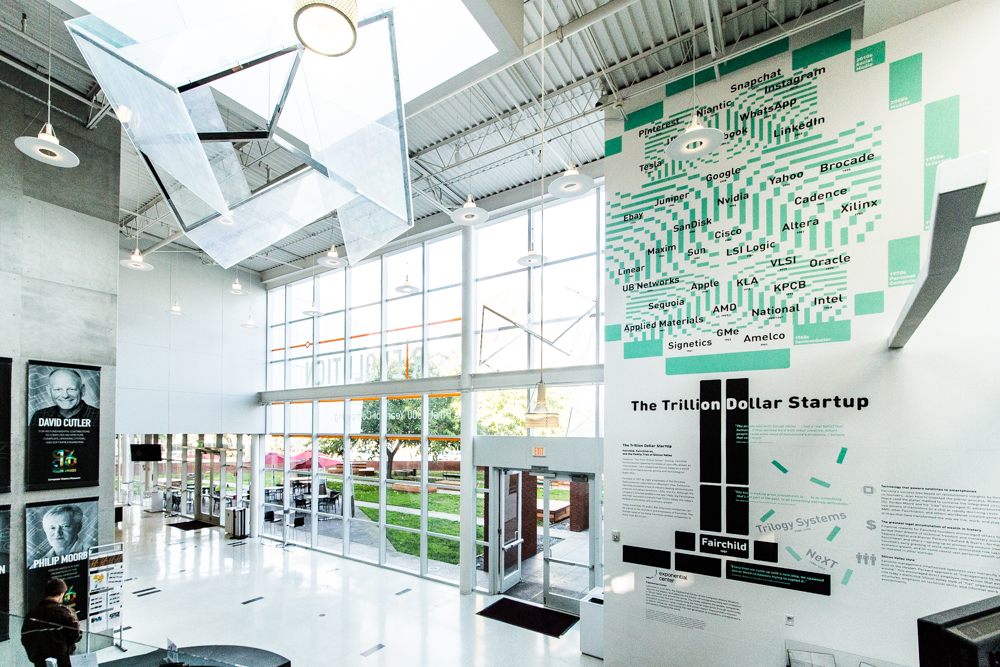Spinoffs are an important way that technical knowledge, specific skills, and experience spreads. They extend the impact of innovative technologies far beyond their place of birth.
Companies that trace their origins to the founders and employees of legendary Fairchild Semiconductor, known as “Fairchildren,” established Silicon Valley as a world center of entrepreneurial activity and technological leadership. Many Fairchildren failed due to weak products, unfortunate timing, or poor management, but talented employees quickly found new opportunities in Silicon Valley’s dynamic entrepreneurial ecosystem.

A 2016 exhibit in the CHM lobby, representing examples of the hundreds of Fairchildren established over six generations of technology ventures. Courtesy of Douglas Fairbairn Photography.
Founded in 1957 by eight former employees of the Shockley Semiconductor Laboratory in Mountain View, California, Fairchild pioneered a host of industry leading semiconductor products including transistors, LEDs, and ICs. Coupled with the academic resources of Stanford University and UC Berkeley, successful Bay Area ventures over many decades had established a strong local foundation of enterprise and technical expertise. Fairchild’s extraordinary success and growth capitalized on being planted in this fertile ground.
Fairchild’s success was based on revolutionary insights by three cofounders. Jean Hoerni invented the planar process. Robert Noyce used the planar method to conceive the integrated circuit (IC). Gordon Moore and his “law” encouraged IC advancements that today enable billions of transistors on a chip at rapidly declining cost per transistor. Intel, AMD, other Fairchildren, and companies worldwide created generations of chips that have transformed the way we work, live, and play.
Financial rewards for Fairchild founders encouraged others to pursue their dreams of professional freedom and monetary success. Sequoia Capital and Kleiner Perkins Caufield & Byers—formed by Fairchildren and others—sprang up as pioneering venture investors. Fairchild’s early granting of stock options stimulated risk-taking, economic growth, and (in some cases) vast personal wealth often re-invested in other startups.
Fairchild management emphasized openness over hierarchy that built on the Hewlett-Packard approach of “management by walking around.” This encouraged direct employee interaction that evolved into today’s distinctive Silicon Valley style of “flat” organizational structures, emphasis on technical skills, and informal work environments.
 |
Although the company’s fortunes peaked in the late 1960s, the Fairchildren and their successors transformed Silicon Valley into today’s hotbed of innovation and economic growth. In 2014, a research analyst traced more than 92 public Bay Area tech companies to the founders and employees of Fairchild. At that time, the market value of all these companies was more than $2 trillion.

This graphic appeared in The Trillion Dollar Startup, exhibited in the lobby of CHM from December 2016 to October 2017.
Development of this story of the Fairchildren was led by the Exponential Center at CHM with major contributions from CHM curator David Laws.